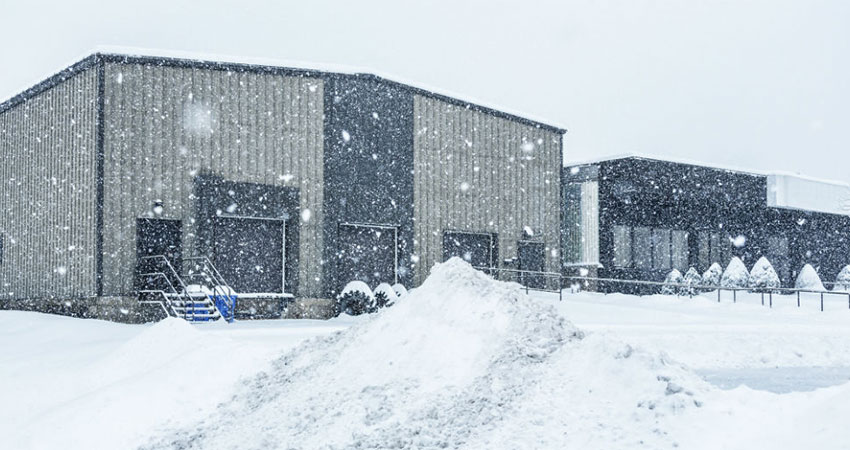While overcoming sophisticated challenges is at the core of our business, logistics professionals are faced with even greater challenges keeping operations safe and moving during the winter. Technological innovations have reduced some vulnerabilities and operational hurdles, but concerns still remain over the safety of inventory, workers and overall warehouse operations.
We can’t change the weather, but with minimal effort we can help mitigate exposure when the inevitable transpires. By taking a few simple yet often overlooked steps, even as the calendar has turned into 2019, logistics managers can effectively maintain a safer operation through the coldest months.
Preparing the Warehouse
Taking a strategic and commonsense approach to winter prep for your warehouse and distribution center is not dissimilar to what you do at your own home: Actionable steps before harsh winter conditions arrive.
A good starting point is to check on the status of heat generation. This simple proactive effort lets you mend any damaged equipment before extreme weather conditions make it impossible. For instance, if this winter is anything like that which produced the Bomb Cyclone in early 2018, a damaged heating facility could potentially cost significant levels of inventory.
If you haven’t already done so, investing in High-Volume, Low-Speed (HVLS) fans can be beneficial year-round. HVLS fans combine warm and cold air to create a more consistent temperature throughout the facility. They help regulate warehouse temperature, which is extremely important in the winter season, especially if your operations are more frequently exposed to the elements. Being proactive about warehouse temperature regulation helps guarantee workers and inventory are safe during the long winter days.
During this time, significant attention should be paid to the overall organization of your facility and an even greater focus should be placed on protecting commodities vulnerable to freezing temperatures. It’s important to constantly evaluate the overall organization and quality of your facility to ensure all products are stored and distributed intact and ready for use.
An unorganized warehouse is a breeding ground for unproductive practices, avoidable winter-related damages and increased risk of injury. Asses the effectiveness of your current methods for storing, packing and distributing inventory and be read with the tools and resources needed.
Preparing Your Team
No matter the season, worker safety should always be your number-one priority. Extremely cold weather can cause workers to suffer from frostbite and hyperthermia. In addition to preparing your warehouse for the cold weather, make sure your team has the essential items needed for a successful winter season. Stress the importance of wearing proper attire during the coldest months, including:
- Heavy no-slip work gloves
- Insulated coats
- Layered clothing
- Waterproof boots with traction
- Hats or beanies
While some may not take it seriously, it is worth remind your team of proper stretching techniques, especially those who alternate between being stationary and being active. The cold weather causes muscles and joints to tighten which can lead to an influx of strains, pulls and tears. Small measures such as stretching can go a long way in helping prevent these types of injuries.
Adverse weather does not make our jobs as supply chain professionals any easier, and the winter months present some of the greatest challenges. With many carriers setting their capacity well in advance for customers, scant room is available for last-minute shipments and unexpected issues, especially with the ever-growing driver shortage problem.
However by preparing your warehouse and team members, distribution and logistics managers can ensure their entire operation runs smoothly during the coldest months and throughout the year.
Frank Granieri is Chief Operating Officer of A. Duie Pyle

